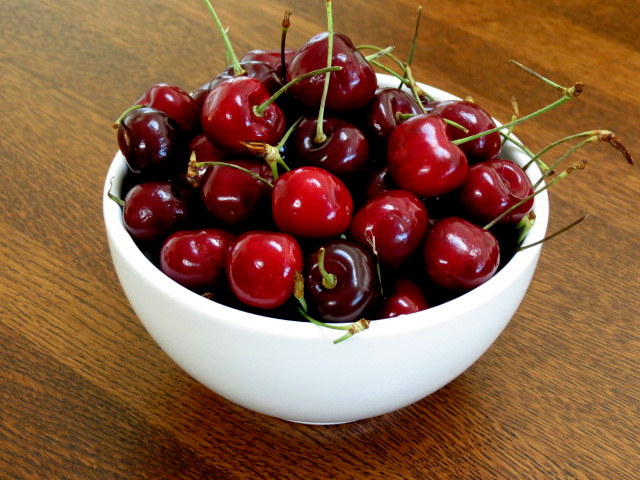People have been sweet on desserts for quite a while. Prior to sugar, there was nectar, the accessible normal sugar, as long as you weren't anxious about honey bees. As far back as 8000 BC, New Guinea and Southeast Asian started removing juice from the sugar stick plant and every now and again biting it for its sweet taste (sort of like early biting gum). With the revelation of granulation a couple of thousand years after the fact, it was effectively transported and gradually brought into Persia, India and at last the Mediterranean nations along the exchange courses. Around 510 BC the Persian Emperor Darius attacked India where he found "the reed which gives nectar without honey bees."
Amid medieval occasions, sugar was very costly and thought about a fine flavor, alongside salt, cinnamon, ginger, cloves, and pepper. In spite of the fact that improving still depended chiefly on nectar and natural products (like dates), it advanced into the West Indies, on account of Christopher Columbus, a sweet person, since he conveyed sugar on his second voyage there, explicitly to Hispaniola, what is presently Haiti and the Dominican Republic. Incidentally, antiquated Greeks and Romans thought of it as therapeutic. (Oh joy, wouldn't that be incredible.)
As later as two hundred years prior, when sugar was a top-notch product, the normal American expended just around 5 pounds ev,ery year. Nowadays, the normal American devours a stunning 150 to 170 pounds of sugar in one year, which happens to 1/4 to 1/2 pound every day (picture 30 to 35 fian ve-pound packs). Wow. You're considering, no chance, not me. All things considered, regardless of whether you don't drink soda pops or improved refreshments, included sugar is sneaking in such a significant number of sustenances where you probably won't understand. Sugars, for example, high fructose corn syrup can be found in ordinary nuts and bolts which we use generously without an idea: ketcha up, sausage, prepared sustenances, canned products, nutty spread, serving of mixed greens dressings, the rundown is unending.
The American Heart Association suggests included sugars ought not to surpass 150 calories for every day (37.5 grams or 9 teaspoons) for men; 100 calories for every day (25 grams or 6 teaspoons) for ladies. Hell, one soda pop or sweet treat destroys that.
So where is this sugar attacking our weight control plans? How about we investigate:
Juice boxes for children, regardless of whether it says 100% juice, may contain 15 to 22 grams of sugar for a 6 to 8 oz serving. They should drink a soft drink
Lunchables, much of the time found in kids' lunch boxes, 14 g sugar
Nectar Smack's boxed grain is 60% level out sugar (20 g )
Apple Jacks and Fruit Loops both come in at (12 g)
What about those beverages you accept are more beneficial: numerous well known natural product smoothies contain more than 40 g in the little size
Your most loved mixed beverages at Starbucks:
Tall Caramel Frappuccino (12 oz) 46 g
Horchata Almond drain Frappuccino (16 oz) 66 g
Normal 12-ounce jar of soft drink contains around 8 teaspoons of straightforward sugar. It just takes four 12-ounce jars of soft drink to measure up to 1/4 pound! For a few people, drinking this measure of soft drink in one day is certainly not a troublesome undertaking to achieve. For some, it is an every day propensity; other mainstream sodas normal 13 g to 16 g.
A standout amongst the most prevalent threats on your food merchants' rack:
Chips Ahoy, only three treats conveys 33 g;
Twinkies (2 cakes) 33 g;
So we should proceed onward to what may not be as self-evident:
Low-fat yogurt can signify 47 grams of sugar (zowie)
Sports drink (32 g)
Ragu Chunky pasta sauce 12 g sugar (per 1/2 container)
Canned veggies 10 g for each serving
Coated donut 12 g
One scoop of premium frozen yogurt, up to 19 g (include 2 T chocolate syrup another 19 g)
Chocolate shake (drive-thru food) 74 g sugar
2 Tablespoons of Honey Mustard Dressing has 5 grams of sugar; a similar serving of without fat French has 7 grams, (and few individuals utilize only 2 Tablespoons)
Normal granola lunch room 24 g
(creator's note: many low or without fat items contain additional sugar, and remember that drinking squeezed orange or squeezed apple is still sugar)
So only for entertainment only, how about we include a run of the mill American day by day nourishment admission (normal segments) 4 grams of sugar measures up to 1 teaspoon:
Breakfast: squeezed orange, oat, espresso (20 g, 12 g) smoothie or two doughnuts on the run (40 g or 24 g)
Lunch: off to the cheap food joint where you snatch a cheeseburger, fries, loads of ketchup and a chocolate shake (9 g, 14 g, 74 g)
Evening: mixed espresso lift me up (46 g) or striking the workplace candy machine for a treat, soda pop (30 g, 39 g)
Supper: solidified dish, serving of mixed greens with dressing, 4 treats, frosted tea with sugar (16 g, 20 g, 44 g, 4 g)
Late night nibble: nutty spread with saltines (14 g + 2 g), cola (39 g)
All out: 337 g which means an astounding 84 teaspoons of sugar for the day (and that is traditionalist). Wow.
Regardless of what you call it, corn syrup, maltose, fructose, lactose, dextrose, dark-colored sugar, stick precious stones, pure sweetener, corn sugar, corn syrup, corn syrup solids, organic product juice, malt syrup, concentrates, high-fructose corn syrup, nectar, fluid fructose, maple syrup, molasses, crude sugar, syrup and white sugar, sorbitol, sorghum, sucanat, mannitol, malted grain, maltodextrin, rice syrup and as yet checking, it spells sugar and the human body does not separate. (Besides you require a degree in science just to articulate the names.) Have a sweet day.
Writer Dale Phillip is one sweet author. She confesses to having a sweet tooth, in spite of the fact that she has tempered it incredibly since adolescence. Pastries top her hit March, including natively constructed treats and brownies.
Popular Posts

Red Gold - Apple
January 17, 2019

Whatcha Eatin' Bubba
January 17, 2019

Bowl of Cherries
January 17, 2019
adds
Recent in Recipes
3/Food/post-list
Menu Footer Widget
Crafted with by TemplatesYard | Distributed by Gooyaabi Templates
0 Comments